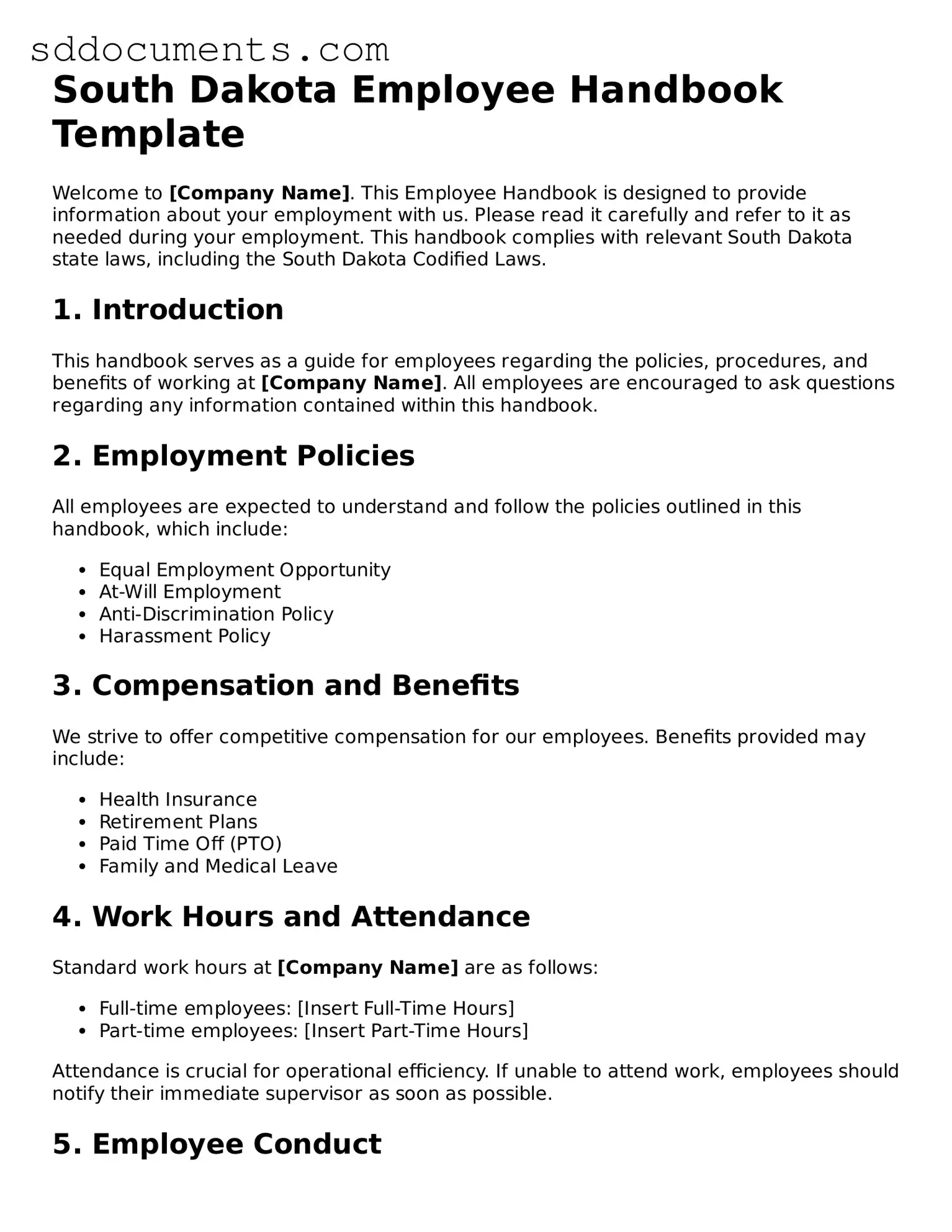Free Employee Handbook Template for South Dakota
The South Dakota Employee Handbook form is a vital document that outlines workplace policies, employee rights, and responsibilities. It serves as a guide for both employers and employees, ensuring clarity and compliance with state laws. To create a comprehensive handbook for your organization, fill out the form by clicking the button below.
Customize Document Online
